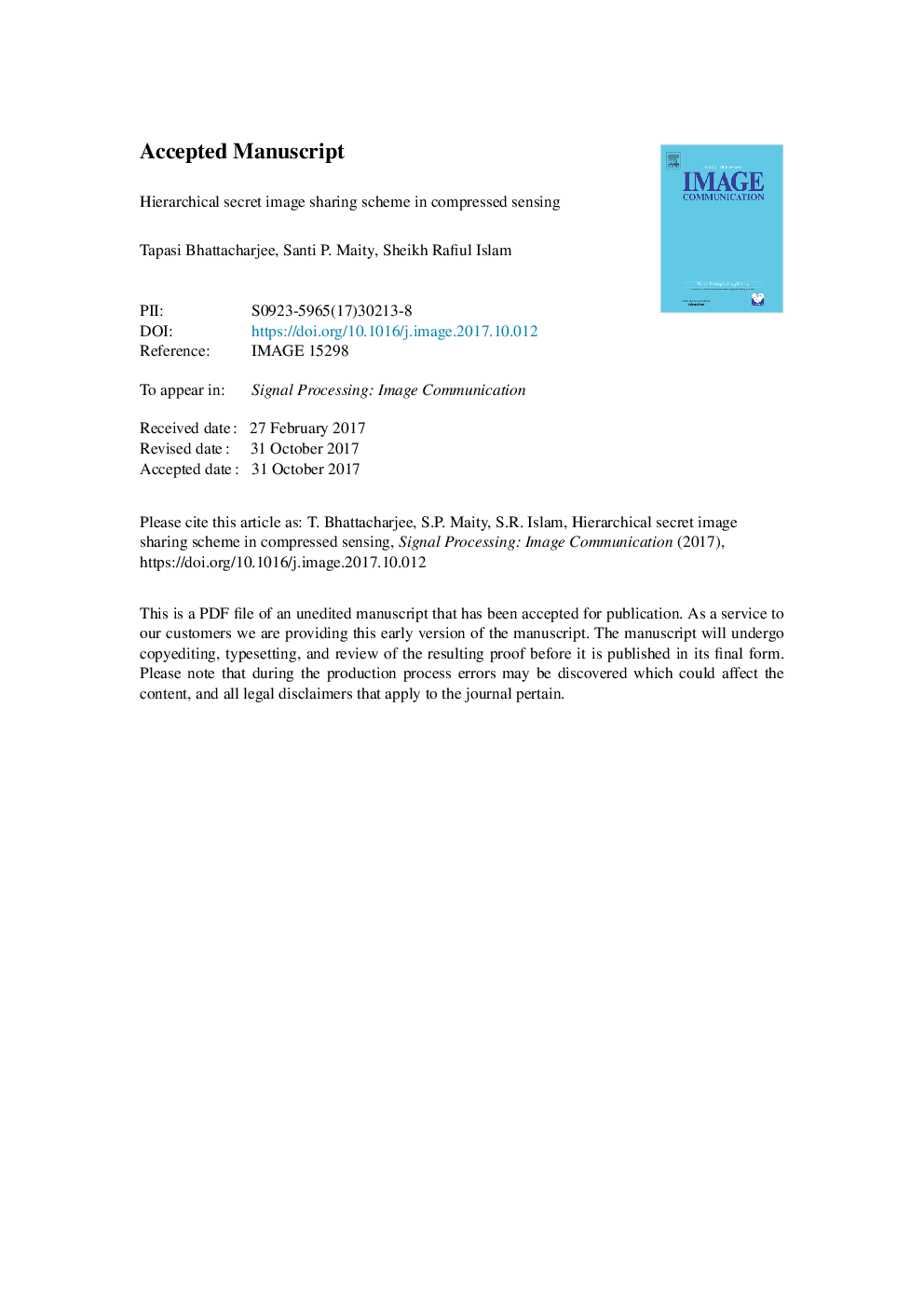| Article ID | Journal | Published Year | Pages | File Type |
|---|---|---|---|---|
| 6941642 | Signal Processing: Image Communication | 2018 | 33 Pages |
Abstract
Secret image sharing (SIS) is a technique of protecting the secret images from an unauthorized access through the generation of few shares or shadow images and serves various purposes such as multi-party computation, threshold cryptography, access control etc. Some of these applications demand hierarchical access based SIS scheme with flexible shadow size adaptive to the available transmission bandwidth. To this aim, share/shadow image generation (with reduced size) is considered here as a sparse signal (secret) reconstruction problem as is done in compressed sensing or compressive sampling (CS). A prediction error (PE) matrix is formed for the secret image which then undergoes sub-sampling followed by its partitioning into two sets of shares: one mandatory share (MS) and 'n' number of general shares (GSs) thus form an integrated framework of CS and Shamir's (k,n)-threshold secret sharing scheme. The contribution of the MS and at least 'k' number of GSs are essential to reconstruct the secret image. The change in the number of CS measurements leads to the flexibility in share size adaptive to transmission bandwidth and offers a progressive quality access control along with relative changes in unauthorized decoding probability. A large set of simulation results show the average decoding quality of the secret images with PSNR values of 31.4 dB and 35.7 dB for 10% and 30% measurements, respectively.
Keywords
Related Topics
Physical Sciences and Engineering
Computer Science
Computer Vision and Pattern Recognition
Authors
Tapasi Bhattacharjee, Santi P. Maity, Sheikh Rafiul Islam,
